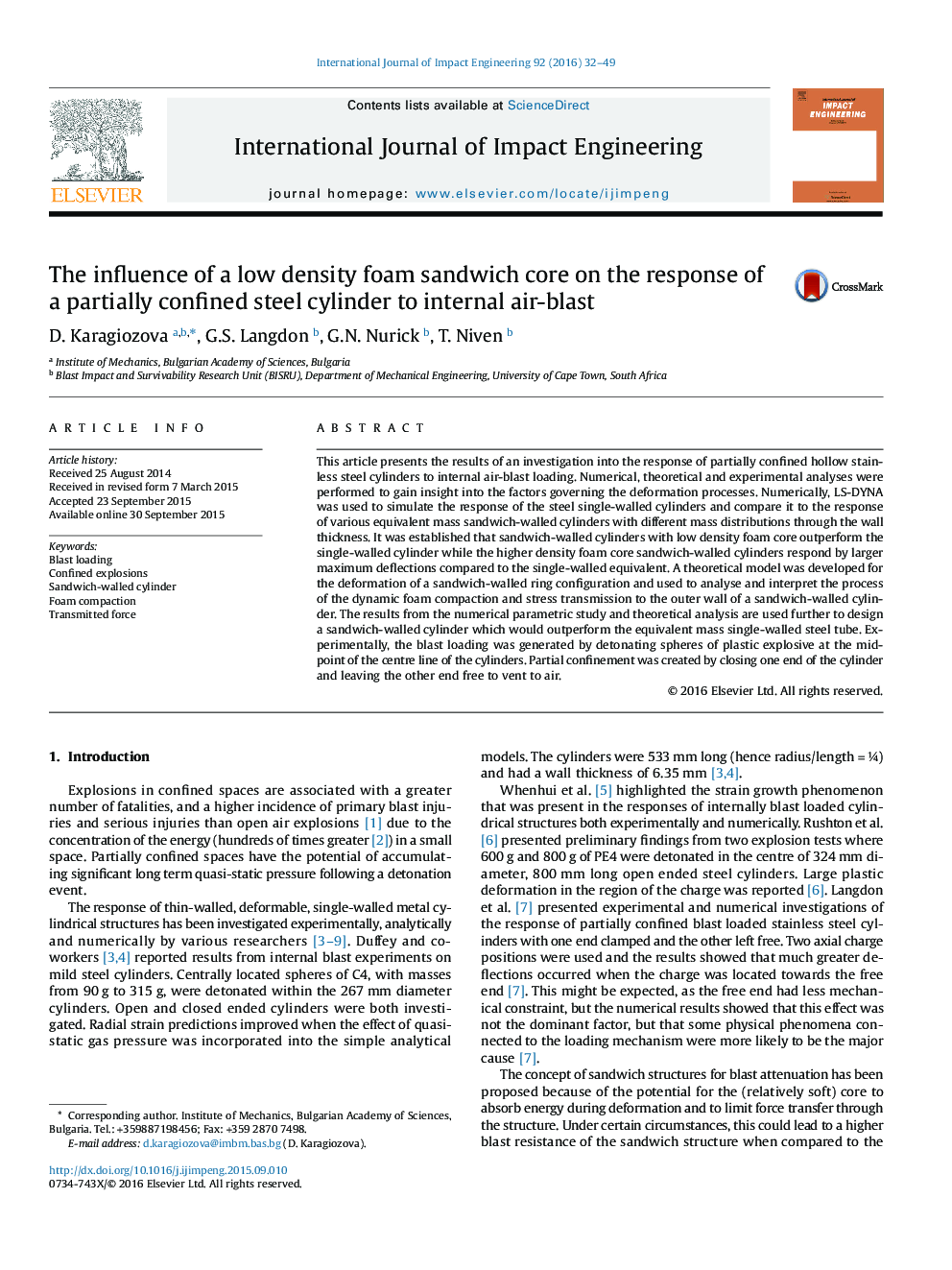| کد مقاله | کد نشریه | سال انتشار | مقاله انگلیسی | نسخه تمام متن |
|---|---|---|---|---|
| 776321 | 1464059 | 2016 | 18 صفحه PDF | دانلود رایگان |
• Numerical and experimental analyses are performed on the blast response of sandwich-walled cylinders.
• A theoretical model is developed for the dynamic deformation of a sandwich-walled ring.
• The characteristics of sandwich-walled cylinders that outperform steel hollow cylinders are established.
This article presents the results of an investigation into the response of partially confined hollow stainless steel cylinders to internal air-blast loading. Numerical, theoretical and experimental analyses were performed to gain insight into the factors governing the deformation processes. Numerically, LS-DYNA was used to simulate the response of the steel single-walled cylinders and compare it to the response of various equivalent mass sandwich-walled cylinders with different mass distributions through the wall thickness. It was established that sandwich-walled cylinders with low density foam core outperform the single-walled cylinder while the higher density foam core sandwich-walled cylinders respond by larger maximum deflections compared to the single-walled equivalent. A theoretical model was developed for the deformation of a sandwich-walled ring configuration and used to analyse and interpret the process of the dynamic foam compaction and stress transmission to the outer wall of a sandwich-walled cylinder. The results from the numerical parametric study and theoretical analysis are used further to design a sandwich-walled cylinder which would outperform the equivalent mass single-walled steel tube. Experimentally, the blast loading was generated by detonating spheres of plastic explosive at the mid-point of the centre line of the cylinders. Partial confinement was created by closing one end of the cylinder and leaving the other end free to vent to air.
Journal: International Journal of Impact Engineering - Volume 92, June 2016, Pages 32–49
